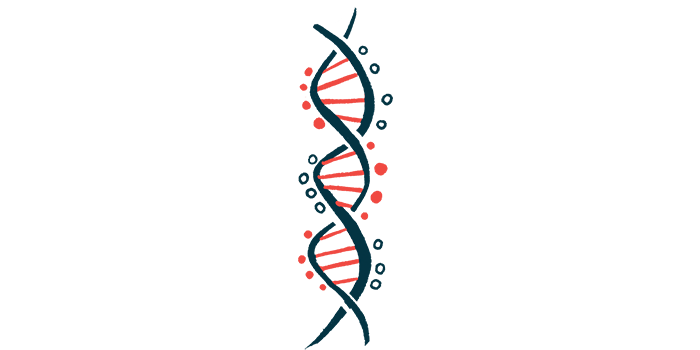Hidden role of MYOD protein may lead to new MD therapies: Study
Researchers find it can turn off certain genes in addition to activating them

A protein called MYOD, which is known to control the growth of muscle stem cells during muscle repair, has long been known to be able to turn on genes, but a recent study has now found that MYOD can also turn off certain genes.
According to researchers, the findings may help pave the way toward regenerative treatment approaches for muscular dystrophy.
The study, “MYOD represses gene expression from non-E-box motifs,” was published in Genes and Development.
More than half of the binding events occurred in genes that were turned off
When muscles are injured, muscle stem cells normally become activated to grow into new muscle cells and help repair muscle tissue. In people with muscular dystrophies — genetic diseases marked by muscle damage — this natural repair mechanism may compensate for muscle damage at first, but in the long term, damage outpaces the repair.
MYOD plays a key role in activating muscle stem cells during repair. MYOD is a transcription factor — a protein that helps to regulate the expression or activity of different genes inside cells by binding to specific regulatory DNA regions. It has long been known that MYOD can help turn on genes needed for muscle growth, and the traditional view has been that this was MYOD’s only function.
In this study, the researchers conducted experiments examining the activity of MYOD in structural cells called fibroblasts that were being reprogrammed into skeletal muscle cells, a lab model that the scientists said mimics what happens in muscle stem cells during normal muscle repair.
In principle, this finding extends our knowledge on MYOD from a monotone activator of gene expression to a versatile regulator of gene expression.
The scientists found that, consistent with MYOD’s known function, the protein bound to regulatory regions of genes that were upregulated or turned on. But MYOD also bound to regulatory regions of genes that were downregulated, or turned off. In fact, data indicated more than half of the binding events occurred in genes that were turned off.
“In principle, this finding extends our knowledge on MYOD from a monotone activator of gene expression to a versatile regulator of gene expression,” the researchers wrote.
Investigators also found that MYOD binding events associated with gene repression were seen in genes implicated in cell growth, proliferation, and identity regulation.
According to Pier Lorenzo Puri, MD, co-corresponding author of the study at Sanford Burnham Prebys research institute, these data indicate MYOD not only stimulates cells to grow into muscle cells, but it also acts to stop cells from doing anything else.
“If you think of a cell like a house, then gene expression can be seen as the furniture that plays a major part in defining its unique identity,” Puri said in a press release. “We focus a lot on MYOD’s traditional role of bringing in the new furniture appropriate for a muscle cell, but there is a critical first step of clearing out the old furniture to reset the cell’s identity.”
Researchers found MYOD protein binds to different DNA regions
The researchers also found that MYOD binds to different DNA regions depending on whether genes are being turned on or off. When MYOD turns on genes, it binds to DNA regions called E-box motifs. But when the protein is turning off genes, it binds to completely different DNA regions.
“We discovered that MYOD has the ability to promiscuously bind the DNA at previously unexpected places,” Puri said. “These locations were occupied by transcription factors that were promoting the expression of the cell’s origin lineage genes, so MYOD is binding there to erase the previous lineage prior to turning cells into the myogenic [muscle] lineage.”
Collectively, these data indicate that the function of MYOD in muscle regeneration may be more complex than previously thought.
“We have provided seminal evidence that the same transcriptional activator can also play a repressor role … Transcription factors are way more versatile than we thought, and this newfound versatility is dictated by where and how they bind to DNA,” Puri said.
The researchers also noted that these findings may have implications for the development of regenerative therapies.
“In regenerative medicine, we hope to treat certain medical conditions by turning one cell type into another, one pathological [disease-causing] cell into one physiologically normal or even therapeutic cell,” Puri said. “And now we know that an important task is the repression of the previous lineage’s gene expression furniture.”
In children with muscular dystrophy, Puri noted that regenerative medicine approaches may be used as a means to prolong the so-called honeymoon phase, a period in which there’s a temporary stabilization or slight improvement in motor skills while natural muscle regeneration can still outpace the damage caused by the disease.
“If we can better understand this honeymoon period, then we may be able to use regenerative medicine approaches to extend it for as long as possible,” Puri said.





